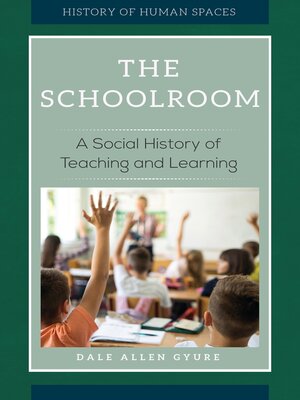The Schoolroom
ebook ∣ A Social History of Teaching and Learning · History of Human Spaces
By Dale Allen Gyure

Sign up to save your library
With an OverDrive account, you can save your favorite libraries for at-a-glance information about availability. Find out more about OverDrive accounts.
Find this title in Libby, the library reading app by OverDrive.



Search for a digital library with this title
Title found at these libraries:
| Library Name | Distance |
|---|---|
| Loading... |
This book examines schoolrooms and their material contents to reveal insights into the evolution of education and the translation of educational theories and cultural ideals into practice.
School attendance is nearly universal in our society, yet very little is known about the history of the classrooms we occupy and the objects we encounter and use in our educational lives. Why are our school classrooms designed as they are? When was the blackboard invented? When did computers start appearing in schools?
Through analysis of classrooms and objects within them, The Schoolroom: A Social History of Teaching and Learning details the history of American education, describing how architects, in collaboration with educators, have shaped learning spaces in response to curricular and pedagogical changes, population shifts, cultural expectations, and concern for children's health and well-being. It illustrates connections between form and function, showing how a well-designed school building can encourage learning, and reveals little-known histories of ubiquitous educational objects such as blackboards, desks, and computers.
School attendance is nearly universal in our society, yet very little is known about the history of the classrooms we occupy and the objects we encounter and use in our educational lives. Why are our school classrooms designed as they are? When was the blackboard invented? When did computers start appearing in schools?
Through analysis of classrooms and objects within them, The Schoolroom: A Social History of Teaching and Learning details the history of American education, describing how architects, in collaboration with educators, have shaped learning spaces in response to curricular and pedagogical changes, population shifts, cultural expectations, and concern for children's health and well-being. It illustrates connections between form and function, showing how a well-designed school building can encourage learning, and reveals little-known histories of ubiquitous educational objects such as blackboards, desks, and computers.







